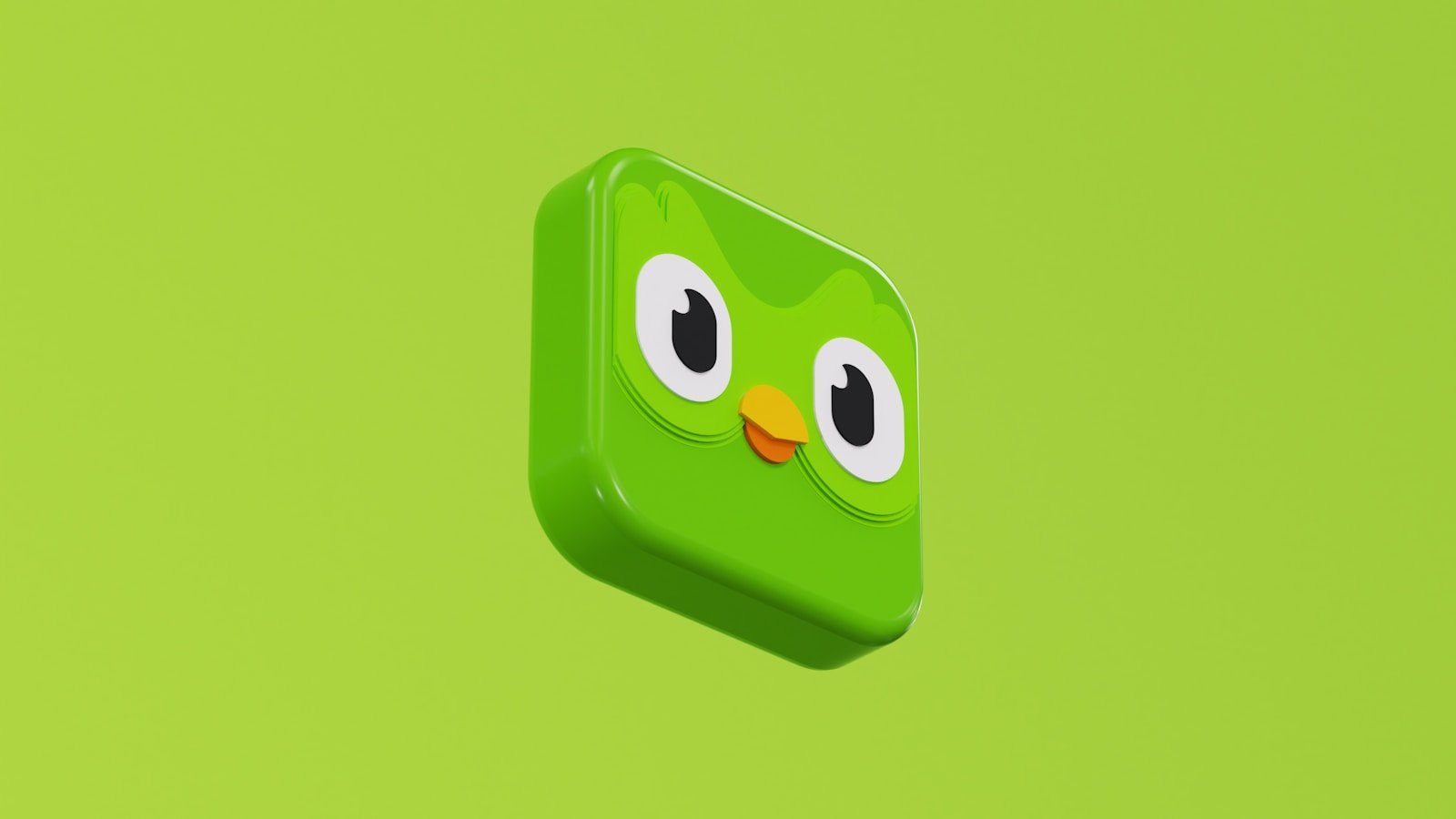Learning a new language opens many doors in life. It helps with travel, work, and meeting new people. Duolingo is the best free app for learning a language, no matter your level or goals.
Finding the right language learning software can make learning easier and more fun. Some apps focus on speaking, while others help with reading or writing. Each person may need something different based on how they learn best and what language they want to study.
1) Duolingo
Duolingo stands out as one of the most popular language learning apps available today. It offers lessons for over 40 languages through a free platform that’s easy to use. Many people choose it as their first step in learning a new language.
The app uses bite-sized lessons based on scientific principles of learning. These short, game-like exercises help users practice reading, writing, listening, and speaking skills. The lessons only take a few minutes each day to complete.
What makes Duolingo so popular? Its engaging format and free version attract millions of users worldwide. The app turns learning into a fun activity rather than a chore.
Duolingo works by teaching concepts repeatedly in different ways. This repetition helps users remember new words and grammar rules. The app also lets users hear how words are pronounced by native speakers.
The Duolingo mobile app and website make learning convenient. Users can practice anywhere—on the bus, during lunch breaks, or before bed. This flexibility fits into busy schedules.
Beyond the basic exercises, Duolingo has expanded its offerings. The platform now includes podcasts and stories to help with more advanced language skills. These features add variety to the learning experience.
For beginners, Duolingo provides an excellent starting point. It familiarizes users with key concepts and builds a foundation for further study. The streak feature encourages daily practice, which is key to language learning success.
While not perfect for becoming fluent, Duolingo creates a solid base of vocabulary and basic grammar. Many language experts recommend using it alongside other resources for the best results.
2) Babbel
Babbel is an effective way to learn a new language. The app uses scientifically proven methods to help users improve their grammar, vocabulary, and pronunciation skills.
The interface is polished and user-friendly. Lessons function like an interactive language textbook, making learning more engaging than traditional methods.
Babbel focuses on practical skills. Users practice by filling in missing words from sentences, which builds comprehension and recall abilities.
The app covers all language learning basics. It teaches reading, writing, listening, and speaking in one complete package.
Many users describe Babbel as a “textbook as an app” designed for self-learners. This makes it especially valuable for beginners who want structure in their learning journey.
Babbel works on both Android and iOS devices. This flexibility lets users learn at home or on the go, whenever they have a few minutes to spare.
The app offers multiple languages including Spanish, French, Italian, and many more. Each language course is carefully created to build speaking confidence.
Lessons are short but effective. Most take only 10-15 minutes to complete, making it easy to fit language learning into a busy schedule.
3) Anki
Anki is a powerful flashcard app that uses smart repetition to help you learn languages more effectively. It shows you cards you struggle with more often, and less of what you already know well.
Unlike many other language apps, Anki is highly customizable. You can make your own flashcards or download pre-made decks from other users for the language you want to learn.
The name Anki comes from the Japanese word for “memorization,” which fits its purpose perfectly. The app uses a method called spaced repetition to help you remember words and phrases for the long term.
One thing that makes Anki stand out is that it’s available on multiple devices including iPhone, iPad, Android, and computers. Your progress syncs between devices automatically.
Be careful when downloading the app though. There are several apps with similar names in app stores. The official one for iOS is called AnkiMobile, though it does cost $24.
Many language learners consider Anki essential because it lets you focus on the words you find hardest to remember. This makes your study time much more efficient.
You can add pictures, sounds, and even video to your flashcards. This helps create stronger memory connections for new vocabulary.
According to many users, Anki works best when used regularly for short periods. Just 15-20 minutes a day can lead to big improvements in vocabulary retention over time.
Language learners often praise Anki for helping them break through plateaus when other methods stop working. The spaced repetition system keeps challenging you at just the right level.
4) Rosetta Stone
Rosetta Stone stands as one of the most recognized names in language learning software. The program uses an immersive approach that mimics how people learn their first language, without relying on translations or grammar explanations.
Users see pictures and hear native speakers, then match words to images. This method helps build connections directly between the new language and concepts, rather than filtering everything through your native language.
The software is professionally designed with a clean, user-friendly interface. Its structure makes it especially helpful for beginners who are just starting their language journey.
One key strength is its speech recognition technology, which listens to your pronunciation and provides feedback. This feature helps users develop proper speaking habits from the start.
The platform offers 10-minute lessons that fit into busy schedules. You can study online or offline, making it convenient for learning on the go.
While Rosetta Stone provides a solid foundation, some users note that it may not be enough for complete fluency. As mentioned on Reddit, you might need additional resources to reach advanced levels.
The program comes at a premium price compared to some alternatives. However, many consider it worthwhile due to its polished content and proven teaching methods.
Rosetta Stone consistently ranks among top language learning apps, especially for those willing to invest in quality resources. Its structured approach and focus on proper pronunciation create a strong base for further language development.
5) Pimsleur
Pimsleur stands out as a highly effective program for learning to speak and hear a new language. Created by Dr. Pimsleur, this method focuses on teaching languages through audio lessons that mimic natural conversation.
The program uses a unique approach that doesn’t rely on grammar drills or written exercises. Instead, it teaches through listening and speaking, which helps learners develop natural speech patterns.
Pimsleur offers courses in many languages with a focus on practical, everyday conversations. Each lesson lasts about 30 minutes, making it easy to fit into busy schedules.
Monthly subscriptions start at $14.95, which is reasonable compared to other premium language programs. The Pimsleur app makes it simple to learn on the go.
Many users praise Pimsleur for its real-world results. One reviewer mentioned that it provided a wonderful foundation for bringing learning into the real world, especially for languages like Spanish and Swahili.
The program works well for beginners who want to start speaking right away. It helps users learn how to say things and understand responses in everyday situations.
Pimsleur’s method focuses on active recall and spaced repetition. This means learners practice recalling information at key intervals to build long-term memory.
The lack of visual aids might be challenging for some learners. However, this audio-focused approach forces students to develop strong listening skills from the start.
For those wanting to try before buying, Pimsleur offers free trial lessons in many languages.
6) Glossika
Glossika is an AI-powered language training system that helps users build speaking fluency through repeated exposure to sentences. Unlike other apps that focus on vocabulary lists or grammar rules, Glossika uses natural sentences as its main teaching method.
The platform works by having users listen to and repeat sentences in their target language. This approach mimics how we naturally learn languages as children.
Glossika uses a smart system called spaced repetition to show you sentences at the right time for best memory retention. The app tracks your progress and shows sentences again when you’re about to forget them.
One key feature is its focus on high-frequency sentence patterns. By practicing these common structures, users build a strong foundation for real conversations.
The system contains about 3800 sentences for many languages. Users hear these sentences spoken by native speakers, which helps develop proper pronunciation.
Glossika works well for people who have some basic knowledge of their target language. Beginners might find it challenging since there’s no step-by-step grammar instruction.
The web-based platform is fairly new but keeps the same core method of mass sentence practice. Glossika stands out by focusing on speaking practice rather than just reading or writing.
For those who want to speak with confidence, Glossika’s approach of massive exposure to natural language patterns offers a different path from traditional language learning apps.
7) Busuu
Busuu stands out as a popular choice for language learners seeking a balanced approach. This platform offers lessons created by experts in up to 13 different languages, making it versatile for various learning goals.
The app combines structured lessons with feedback from native speakers. This social aspect helps users improve their speaking and writing skills with real people, not just algorithms.
Many users find Busuu more effective than Duolingo for certain languages like Spanish. The lessons focus on practical communication skills rather than just vocabulary drills.
Busuu offers both free and premium content. The free version gives access to basic lessons, while the paid version unlocks more comprehensive learning materials and features.
The mobile app works well for on-the-go learning. Users can practice during commutes or short breaks, making language learning fit into busy schedules.
One of Busuu’s strengths is its focus on helping users speak with confidence from day one. The platform designs courses to get learners talking quickly in real-world situations.
The community feedback system sets Busuu apart from many competitors. When learners submit writing or speaking exercises, native speakers provide tips and corrections.
The App Store version receives positive reviews for its user-friendly design. The interface makes navigation simple even for beginners to language learning apps.
Busuu works well for learners of all levels. Beginners find the basic lessons accessible, while advanced students can benefit from more complex content and native speaker interactions.
8) Memrise
Memrise stands out in the language learning world by focusing on how people actually speak. The app uses videos of native speakers in their lessons, showing real people saying real phrases.
This approach helps learners pick up natural speech patterns. You don’t just learn textbook phrases – you learn how locals really talk in everyday situations.
Memrise works well for both beginners and those with some experience. If you’re starting from scratch or want to build on basics, the app adapts to your level.
Users on Reddit have noted that Memrise is particularly helpful for beginners learning new characters and building basic vocabulary. The spaced repetition system helps words stick in your memory.
The app is available for iPhone and Android users. Its interface makes daily practice simple and accessible.
What makes Memrise different from many competitors is its authenticity. While some apps use computer voices, Memrise relies on user-submitted videos of real native speakers saying the words and phrases you’re learning.
The lessons feel personal and practical. You see how words are formed on real people’s lips and hear natural pronunciation and intonation.
Memrise offers both free and paid versions. The free option provides solid basic learning tools, while premium unlocks more features and content.
For visual learners who want to hear and see language in use, Memrise provides an engaging learning path. The bite-sized lessons fit easily into busy schedules.
9) Lingvist
Lingvist stands out as a smart language learning app that uses AI to help people learn faster. The app focuses on teaching vocabulary efficiently through flashcards and spaced repetition techniques.
Users enjoy Lingvist’s quick placement test, which doesn’t take too long to complete. This feature helps learners avoid the frustration of starting from scratch when they already know some basics.
The app offers more than 50 language courses for students to choose from. This wide selection makes it a good choice for people interested in both common and less-studied languages.
Lingvist costs about $10 per month, which puts it in the mid-range for language apps. The price seems fair considering its advanced technology and broad course offerings.
Many language learners on forums like Reddit have mixed opinions about the app. Some think it could be great for vocabulary building, while others point out certain limitations.
The app’s creators include scientists and language experts who designed it specifically to build vocabulary quickly. Apple’s App Store features Lingvist with positive ratings from users.
For people beyond the beginner stage, Lingvist proves especially useful. The app targets learners who already have some base knowledge and want to expand their vocabulary more efficiently.
The clean, straightforward design helps users focus on learning without distractions. The interface prioritizes the learning experience rather than flashy graphics or unnecessary features.
10) HelloTalk
HelloTalk stands out as a unique approach to language learning. Unlike traditional apps focused on lessons and exercises, HelloTalk connects you directly with native speakers around the world.
The platform functions as the largest language exchange app where users can practice languages for free. It matches language learners with native speakers who want to learn each other’s languages.
What makes HelloTalk special are its built-in learning tools. These include translation features and instant captions that help you learn through real conversations. Users can chat, call, and even practice pronunciation with people who speak the language they want to learn.
The app has a clean, user-friendly interface. Many users praise its helpful features such as reply assistance, translation, speaking practice, and transliteration tools in the chat function.
You can even make calls directly within the app, though there are some time limits on this feature. This adds another dimension to language practice beyond text chatting.
Most people report positive experiences with the community. Users typically find others who are friendly and genuinely interested in language exchange.
Some users note that, like any social platform, you might encounter people using it for dating rather than language learning. However, the app has tools to block unwanted contacts.
HelloTalk works best as a supplement to other language learning methods. It provides real-world practice that textbooks and courses often miss.
Benefits of Language Learning Software
Language learning software offers valuable advantages for anyone wanting to learn a new language. These programs combine convenience with engaging content to help users make progress faster than traditional methods.
Flexibility and Convenience
Language learning apps and software let you study anywhere, anytime. Unlike fixed classroom schedules, you can practice during lunch breaks, while commuting, or before bed. This flexibility makes it easier to fit language learning into busy lives.
Most modern language learning apps work on multiple devices – phones, tablets, and computers. This means you can start a lesson on your computer and finish it on your phone later.
Many programs also offer offline modes. Users can download lessons before traveling and practice without internet access, which is perfect for commuters or travelers.
The self-paced nature of these tools allows learners to move as quickly or slowly as needed. There’s no pressure to keep up with classmates or rush through difficult concepts.
Interactive and Engaging Content
Language learning software uses games, stories, and interactive exercises to make learning fun. This approach helps information stick better than textbook memorization.
Many programs use spaced repetition systems that show words and phrases at optimal intervals. This scientific method helps move vocabulary into long-term memory efficiently.
Visual aids and audio clips demonstrate correct pronunciation and usage. Users can hear native speakers and practice matching what they hear.
Most software includes real-life scenarios and conversations rather than random vocabulary lists. This contextual learning helps users apply their knowledge in actual situations.
Progress tracking features show improvement over time, which helps maintain motivation. Clear statistics and achievement badges give learners a sense of accomplishment as they advance.
Key Features to Consider
When choosing language learning software, certain features can make or break your learning experience. The right software should match your skill level and offer enough language options to suit your needs.
Adaptable Learning Levels
Good language apps adjust to how well you know a language. Rosetta Stone, one of the top language learning apps, offers different difficulty levels for beginners to advanced speakers.
Effective software tracks your progress and changes lessons based on what you know. This makes learning faster and more fun.
Look for programs with placement tests. These tests put you at the right level from the start so you don’t waste time on stuff you already know.
Some apps use AI to spot your weak areas. They then give you extra practice in those spots. This kind of smart tracking helps you learn better.
Programs with adjustable speech recognition are also valuable. They can be set to be more forgiving for beginners but stricter as skills improve.
Wide Range of Languages Offered
The best language software gives you many language choices. Some apps focus on popular languages like Spanish and French, while others offer rare languages too.
Duolingo’s free version stands out by offering over 40 languages. This makes it a top choice for curious learners.
When picking software, check if it teaches the specific type of language you need:
- Business language
- Travel phrases
- Academic vocabulary
- Everyday conversation
Some programs teach multiple dialects of the same language. For example, they might cover both European Spanish and Latin American Spanish.
Good software also includes cultural notes with language lessons. This helps users understand not just words, but how to use them properly in context.
Frequently Asked Questions
Language learning software offers many options for different needs and learning styles. Here are answers to common questions about popular platforms like Duolingo, Babbel, and Rosetta Stone.
What software provides the most effective language learning experience for adults?
Babbel stands out for adult learners who want structured lessons. It uses practical dialogues that help with real conversations.
Rosetta Stone works well for visual learners with its immersion approach. It avoids translation and teaches through context.
For those who prefer customized learning, Anki offers a powerful flashcard system. Many serious language learners praise its spaced repetition system for long-term memory.
Which free language learning applications offer the best functionality without any cost?
Duolingo leads the free app category by a wide margin. It offers complete courses without requiring payment, making it accessible to everyone.
Memrise provides a solid free version with vocabulary-focused learning. Users can access many courses without paying.
Quizlet offers free flashcard creation and study tools. It works well for vocabulary building and basic grammar practice.
How does Rosetta Stone compare to other leading language learning platforms?
Rosetta Stone uses a unique immersion method that teaches without translation. This differs from apps like Duolingo and Babbel that explain grammar rules.
Users report good retention with Rosetta Stone even after breaks from studying. The program focuses on natural language acquisition rather than memorization.
The platform costs more than most competitors but offers a comprehensive system. Many travelers find it helpful for basic communication skills.
Can you recommend language learning apps that focus on improving speaking skills?
Pimsleur excels in teaching pronunciation and speaking skills. Its audio-based lessons focus on conversation from day one.
Babbel includes speech recognition to help users improve their accent. The program gives feedback on pronunciation to help learners sound more natural.
Rosetta Stone also offers strong speech recognition technology. It helps users perfect their pronunciation through immediate feedback.
What are the opinions of language learners on Reddit regarding the top language learning software?
Reddit language learners often recommend Anki as the most effective tool for serious study. Many praise its customization options and spaced repetition system.
Duolingo receives mixed reviews on Reddit. Users appreciate its accessibility but note limitations for reaching advanced levels.
Many Reddit users suggest combining multiple resources rather than relying on one app. They often recommend using textbooks alongside apps like Anki or Babbel.
Are there any language learning platforms that surpass Duolingo in terms of teaching quality?
Babbel offers more in-depth grammar explanations than Duolingo. It focuses on practical conversation skills that prepare learners for real-world use.
Pimsleur provides better speaking practice than Duolingo. Its method centers on interactive audio lessons rather than written exercises.
Rosetta Stone teaches through immersion, which many find more effective for retention. Unlike Duolingo’s gamified approach, it creates a more natural learning environment.







